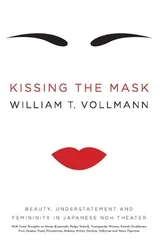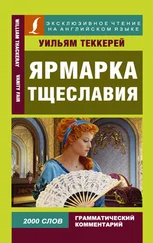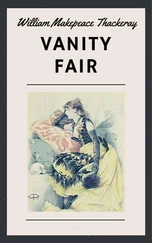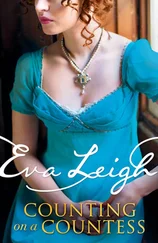Eleanor Brainerd - In Vanity Fair - A Tale of Frocks and Femininity
Здесь есть возможность читать онлайн «Eleanor Brainerd - In Vanity Fair - A Tale of Frocks and Femininity» — ознакомительный отрывок электронной книги совершенно бесплатно, а после прочтения отрывка купить полную версию. В некоторых случаях можно слушать аудио, скачать через торрент в формате fb2 и присутствует краткое содержание. Жанр: foreign_antique, foreign_prose, на английском языке. Описание произведения, (предисловие) а так же отзывы посетителей доступны на портале библиотеки ЛибКат.
- Название:In Vanity Fair: A Tale of Frocks and Femininity
- Автор:
- Жанр:
- Год:неизвестен
- ISBN:нет данных
- Рейтинг книги:5 / 5. Голосов: 1
-
Избранное:Добавить в избранное
- Отзывы:
-
Ваша оценка:
- 100
- 1
- 2
- 3
- 4
- 5
In Vanity Fair: A Tale of Frocks and Femininity: краткое содержание, описание и аннотация
Предлагаем к чтению аннотацию, описание, краткое содержание или предисловие (зависит от того, что написал сам автор книги «In Vanity Fair: A Tale of Frocks and Femininity»). Если вы не нашли необходимую информацию о книге — напишите в комментариях, мы постараемся отыскать её.
In Vanity Fair: A Tale of Frocks and Femininity — читать онлайн ознакомительный отрывок
Ниже представлен текст книги, разбитый по страницам. Система сохранения места последней прочитанной страницы, позволяет с удобством читать онлайн бесплатно книгу «In Vanity Fair: A Tale of Frocks and Femininity», без необходимости каждый раз заново искать на чём Вы остановились. Поставьте закладку, и сможете в любой момент перейти на страницу, на которой закончили чтение.
Интервал:
Закладка:
The great lady of Paris is grande dame to her finger-tips, whether she nurses the traditions of the old régime in her exclusive salon in the Faubourg St. Germain or follows after such new gods as "le sport" and broadens her visiting list to include the trades and arts, – provided always that the trade and the art have paid well enough to lift tradesman and artist above their metiers. France loves genius, but for social success, in Paris, genius is not enough.
One must have money, wit, and tact to succeed in smart French society without the prestige of aristocratic birth. If one has the birth in addition, so much the better.
There are salons to which only those to the nobility born are eligible, but they are few, and modern French society is prone to go where it will be most skilfully amused, where it will find the most luxury, the greatest originality, the most volatile gaiety. The receptions of the Duchesse de Rohan are impressive, her invitations are in the nature of patents of nobility, but the Comtesse Pillet-Will's extravagantly original fêtes are more popular, and the average Parisian élégante would rather go ballooning with the exceedingly modern young Duchesse d'Uzes than talk politics in the salon of the Comtesse Jean de Castellane or listen to the excellent music which the Comtesse de Bearn provides for her guests. Not that one objects to politics and music. Music is "très chic" as furnished in the salons of the Comtesse de Bearn, the Marquise de Castrone, the Vicomtesse de Tredern, and the other society leaders who are noted for this especial variety of entertainment; and, though the great political salon is a thing of yesteryear, the Parisienne always takes an interest in politics. It is a game, and she adores games, especially games in which men are the counters. She is a born intrigante, and here is a field for legitimate intrigue. Moreover, many men are devoted to politics, and is not sympathy the corner-stone of the foundation of that power over men which is the breath of the Frenchwoman's nostrils?
So, many of the fair Parisiennes play at politics, but few play so charmingly as does the Comtesse Jean. Comtesse Boni de Castellane, too, has political pretensions, and shows a devotion to the royalist cause all the more vehement because grafted upon democratic birth and training; but it is when they pay forty thousand dollars for a week-end house party that the Boni de Castellanes loom large upon the Parisian horizon. Their salon is not epoch-making.
Parisian society dabbles in politics, music, art, spiritualism, amateur theatricals, and a host of other things, but it plunges bodily into racing. The Jockey Club of France, which controls the turf in France, is a gentleman's club, and its members are, with the exception of a few rich bourgeois, representatives of the most aristocratic houses of France. The Duc de Noailles, the Duc de Dondeauville, Prince d'Arenberg, Duc de Fezensac, Comte Pillet-Will, Vicomte d'Harcourt and a host of other men as well known are on the list of membership, and it is natural enough that the great racing events near Paris should bring out the flower of Parisian society as well as the heterogeneous crowds common to race tracks.
"Le sport," too, imported from England and conscientiously fostered for a long time before it showed signs of taking firm root in French soil, is now a conspicuous feature of Parisian social life; and golf clubs, tennis clubs, polo clubs, etc., are the chic rendezvous even for that large percentage of Parisian society which, for all its vivacity, would not, under any suasion, lend itself to active exercise. One does not look well when one exercises too violently, and costumes suitable for golf and tennis are not nearly as fascinating as those that may be worn by lookers-on. Therefore, since looking one's best is a sacred duty, and since attractive frock wearing is the Parisienne's religion, Madame, as a rule, prefers to look on. She has sporting blood, but, as we have already said, she is, before all else, "coquette."
CHAPTER II
THE TYRANTS OF THE RUE DE LA PAIX
If one would write of Vanity Fair, one must write of the Rue de la Paix and the Place Vendôme; for the faithful worshippers of the vanities turn toward that quarter of Paris as devoutly as a Mohammedan toward Mecca. There the high priests of Fashion hold sway, and women the world over acknowledge with reverent salaams of spirit that there is no fashion but Paris fashion, though ideas as to Fashion's true prophets may differ.
Let no one speak lightly of the French frock. It has been a world power, and its story, if adequately written, would be a most absorbing and comprehensive one. Drama of all kinds has clung round its frills and furbelows. Revelations philosophical, historical, sociological, lurk in its shimmering folds. Men have died for it, women have sold youth and honour, husband, child, and lover, for it. It is Fashion's supreme expression, and, on the altar of Fashion all things precious have, first and last, been offered up.
Even the French scarcely realize the vital issues involved in the making of the Fashions, but they, at least, approach the matter with becoming gravity. Americans are said to be, next to the French, the best dressed women in the world; but there is a certain lamentable levity in the American attitude toward dress, while the French take everything pertaining to clothes seriously. One need only read a page from one of the best French fashion journals to grasp the national point of view.
Here is no mere curt chronicle of the modes. The writer's rhapsodies put our spring poets to shame. Called upon to describe a creation in pink taffeta, he dips his pen in May morning dew and invokes the muses. He soars upon the viewless wings of poesy, and, soaring, sings impassioned chants of praise; he culls his similes from all the realm of beauty, his adjectives glow with fervour, he quotes from the classics, he draws upon history and fable, he winds up with a fervid apostrophe to fair woman, – and not one of his French readers smiles. They see no extravagance in his periods. The pink taffeta was from Paquin. Upon what shrine could flowery tributes more fittingly be laid?
The artists of the French fashion journals approach their work in the same spirit. One uses the word artist advisedly, for they are really artists, those men who picture modish femininity for the Parisian fashion journals of the highest class. On this side of the water, fashion illustrators, with one or two exceptions, attempt nothing more than an accurate reproduction of the details of frock or wrap or hat. There their whole duty ends, and as for producing a clever and charming drawing, – perish the thought! The artist who can do that scorns fashion work; or, if he condescends to it, ranks it with his advertisements for soup or sapolio, and refuses to honour the pot boilers with his signature.
"They do these things better in France." There, a man may have studied seriously, may have seen his pictures given place on salon walls, and yet may take pride in being one of the foremost fashion illustrators in France. For example, there is Fournery. He is, perhaps, the most popular of the French fashion artists; he commands large prices, has more orders than he can fill, is independent to the last degree – and he loves the work, puts into it the best of the skill that he has acquired through earnest study, the skill that has won him a place in the salon, when he has taken time from his serious fashion work for such frivolous side issues.
He is a feminist, this artist. Everything that goes to make up feminine coquetry and charm interests him. He is willing to draw a picture of a fashionable frock, for the joy of drawing the woman who can successfully wear it. The "femme chic" is his chosen theme. If editors pay him large sums for gowning his women in certain costumes, so much the better.
Читать дальшеИнтервал:
Закладка:
Похожие книги на «In Vanity Fair: A Tale of Frocks and Femininity»
Представляем Вашему вниманию похожие книги на «In Vanity Fair: A Tale of Frocks and Femininity» списком для выбора. Мы отобрали схожую по названию и смыслу литературу в надежде предоставить читателям больше вариантов отыскать новые, интересные, ещё непрочитанные произведения.
Обсуждение, отзывы о книге «In Vanity Fair: A Tale of Frocks and Femininity» и просто собственные мнения читателей. Оставьте ваши комментарии, напишите, что Вы думаете о произведении, его смысле или главных героях. Укажите что конкретно понравилось, а что нет, и почему Вы так считаете.












